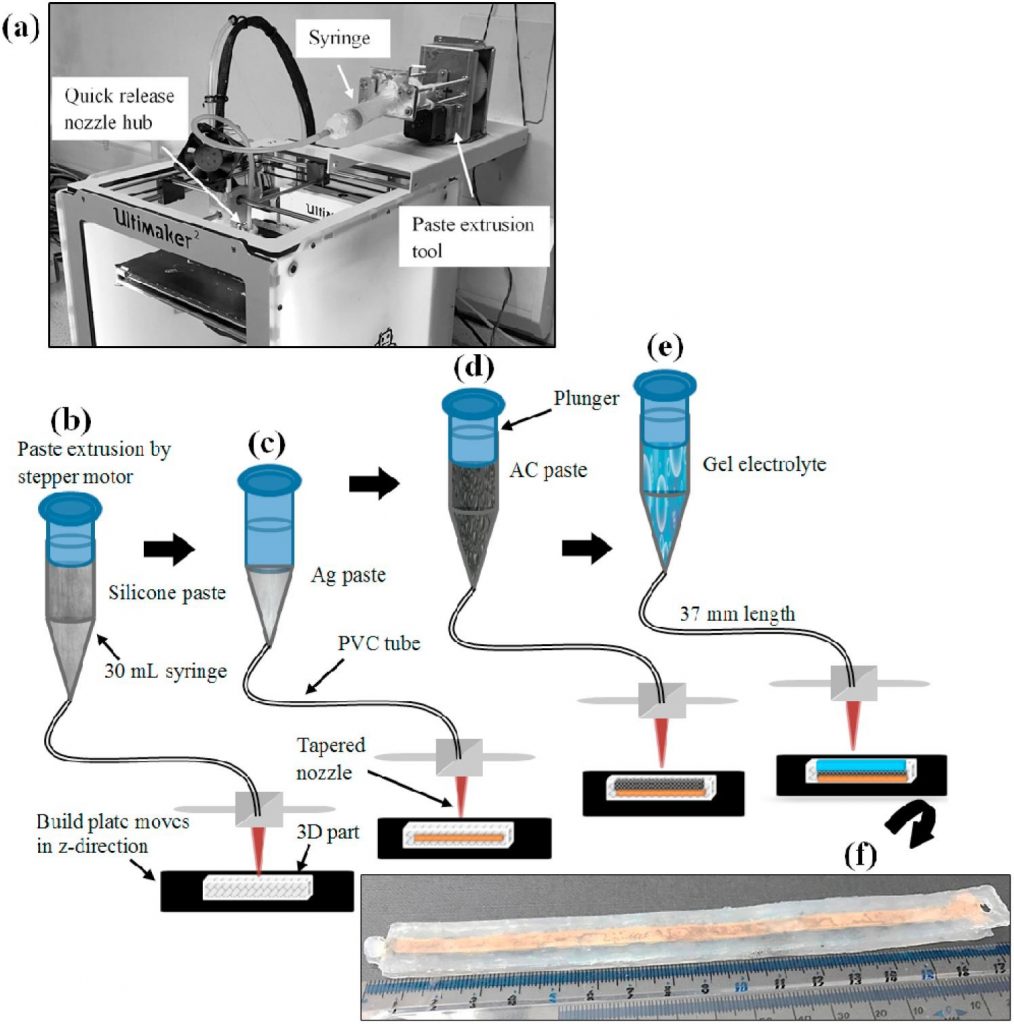Cell phones, laptop computers, electric cars…so much depends upon portable power. Airports, train stations and even fast food restaurants have all taken note of this trend, installing stations for people to get a quick top-up of charge before continuing on their way. Power banks have also become any itinerant’s must have, and many companies are competing for ways to provide the best power at the lowest cost to the customer.
Imagine then, if you could have all this power at your fingertips or, more precisely, wrapped around your wrist.
Using a souped-up desktop FFF 3D printer, researchers of the Cleaner Electronics Research Group at Brunel University London have 3D printed a low cost, flexible battery that can be worked into a wearable silicone band.
According to Milad Areir, PhD candidate and Library Team Member at Brunel, “This is the first time a flexible supercapacitor including all its components has been produced by 3D printing,”
“Our technique brings it all together into one process with one machine.”

How supercapacitors are made
Batteries, or supercapacitors, can be made using a range of methods both in and outside 3D printing. Selective laser melting (SLM) methods have proved especially successful at producing them, but the process is not cost effective, nor does it allow the addition of multiple materials to make the batteries flexible. Outside of additive, Areir explains, “The most popular way to produce them is screen printing, but with that you can’t print the frame of the supercapacitor on silicone.”
Making haste with paste
Flexible supercapacitor fabrication at Brunel is done by extruding silicone, silver, a thermal compound and electrolyte gel in paste form. By incorporating all of these elements in a single operation the technique, according to Areir, “will definitely save time and costs on expensive materials.”

Using paste material is also the way researchers at VTT Technical Centre of Finland were able to create an electronic dressing to help heal and monitor skin wounds.
The future of energy
After lab tests of four 3D printed devices, researchers at Brunel find that the flexible battery demonstrated “an excellent electrical capacitance performance for different combination circuits.”
Areir is optimistic that the technology may one day find commercial application, adding that, “In future it can be used for mobile phones, for example, if the phone battery is dead, you could plug the phone into the supercapacitator wristband and it could act as a booster pack, providing enough power to get to the next charging point.”
Other leading research into the development of next generation energy storage devices, includes an award winning technique from researchers at Harvard University, using 3D printing to make lithium-ion microbatteries.
As highlighted in a handy chart in Brunel’s study, 3D printed graphene has also been investigated for its energy storing capabilities. Brunel’s research is available to read online for free in Materials Science and Engineering: B journal. It is co-authored by Milad Areir, Yanmeng Xu, David Harrison and John Fyson.
For more of the latest 3D printing research breakthroughs, like, follow and subscribe to 3D Printing Industry. Find additive events near you here.
Featured image shows charging wristbands developed at Brunel University London. Photo via Brunel University London



